
All categories
Featured selections
Trade Assurance
Buyer Central
Help Center
Get the app
Become a supplier

(4407 products available)
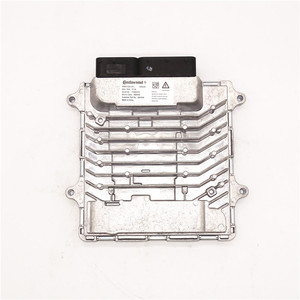

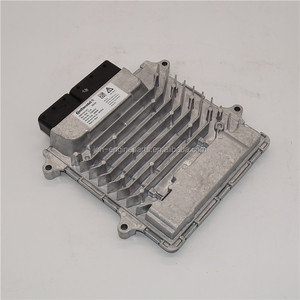






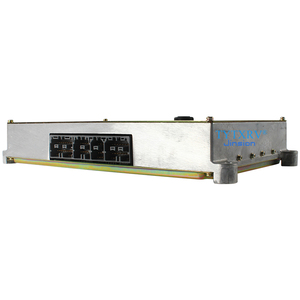












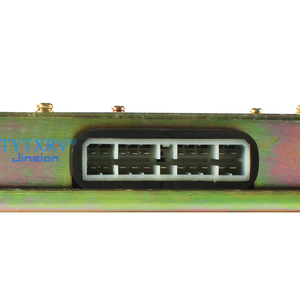


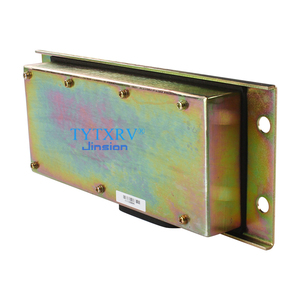

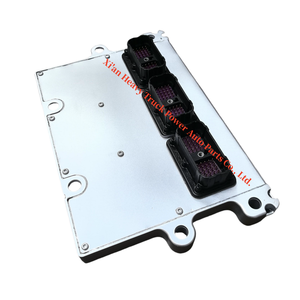











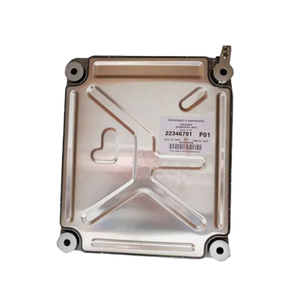


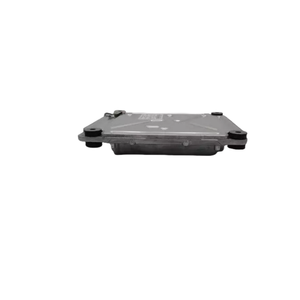





A truck's engine control module (ECM) is a computer that controls the engine's performance. The ECM for trucks gets information from various sensors around the engine and uses this data to set the right parameters for other systems. ECMs are vital for modern trucks with internal combustion engines. They help control emissions, improve fuel efficiency, and manage the engine's performance under different conditions.
There are different ECM types, including:
Aftermarket ECM for trucks
These are ECMs not produced by the truck manufacturer. Instead, they are made by independent companies. The manufacturers of these ECMs often try to improve or modify the settings to boost performance. They may also set the ECMs to particular performance needs. For instance, a truck used for hauling freight may need a different engine performance compared to a delivery truck. The settings on the aftermarket ECM can be tuned to meet the requirements of different users.
Performance ECM for trucks
These are specialized modules intended to maximize engine performance. They are ideal for high-performance trucks used in racing or other high-performance activities. The performance ECM controls the air-fuel mixture, ignition timing, and other engine parameters to maximize power output.
Plug-and-play ECM for trucks
These are control modules designed to be easily installed on a truck. They don't require any wiring modifications. The plug-and-play ECMs usually connect to the engine's control system via a standard connector.
Re-flashed ECM for trucks
Normally, an ECM for trucks comes with pre-defined settings and parameters from the manufacturer. Users can change these settings, or the parameters can be modified by an external programmer. This process is known as re-flashing. During re-flashing, an external programmer plugs into the truck's diagnostic port. Then, the new software is loaded onto the ECM, and the software communicates with the engine control systems. The new software can have modified parameters or settings tailored for specific needs.
Custom-tuned ECM for trucks
A custom-tuned ECM for trucks is specially designed for a particular truck. It has all the settings and parameters customized to meet the requirements of a specific truck. Factors such as the engine type, air intake system, exhaust system, and other parameters are considered when customizing the ECM.
For most heavy trucks, the ECM controls a wide range of activities from the engine to the transmission system. The ECM has its own power supply known as Powertrain Control Module (PCM) which supplies power to its operations. The specifications of the ECMs vary depending on the truck model and the manufacturer.
Electrical Supply Voltage
Electrical supply voltage is the voltage required to power the ECM. The electrical supply voltage for ECMs in heavy trucks typically ranges from 12 to 24 volts, which is consistent with the voltage used in most heavy trucks.
Microprocessor
Every ECM is equipped with a microprocessor which is the brain of the ECM. The microprocessor controls the operations of the ECM and executes different calculations and computations. The microprocessor in most ECMs is specially designed to meet the specific requirements of the truck's engine and can range from 8 to 64 bits.
Memory
The ECM is equipped with memory for data storage. This memory is used by the ECM to store operating parameters, diagnostic data, and control strategies. The memory is divided into three main parts: Read Only Memory (ROM), Random Access Memory (RAM), and Electrically Erasable Programmable Read-Only Memory (EEPROM). The memory capacity for the ECM in heavy trucks typically ranges from 256 KB to several MB, depending on the truck model and engine requirements.
Communication Interface
ECM communication interface is a communication interface designed for communication between the ECM and other essential truck control modules. This communication interface is very important for coordinating activities among different truck systems and modules. For most ECMs in heavy trucks, they are equipped with communication interfaces like Controller Area Network (CAN) Bus and Serial Communication Interface (SCI).
Operating System
The operating system is very important for the ECM because it is responsible for the control and management of the ECM's activities and operations. The operating system is very important for the ECM because it is responsible for the control and management of the ECM's activities and operations. The operating system for the ECM in most heavy trucks is typically designed for real-time operations and control, such as QNX, VxWorks, or Windows CE.
Environmental Requirements
The ECM environmental requirements are the temperature, humidity, vibration, and other environmental factors that can affect the ECM's performance and operations. The environmental requirements for the ECM in most heavy trucks are typically based on the requirements of the truck's engine and other onboard systems. For the temperature and humidity, it should be in a range of -40 to 85 °C (-40 to 185 °F) and 5 to 95% non-condensing, respectively. The vibration and shock should not exceed 20 G RMS and 50 G respectively.
Maintaining the ECM or making sure it is in good shape is very important for the performance and reliability of the truck. The following procedures and steps should be taken to maintain the ECM in good condition:
Choosing the right ECM for a truck is a complex task that requires considering a variety of factors, including the make and model of the truck, its current engine performance, and what enhancements or changes the driver wants to implement. Here are some important factors to consider before choosing an ECM.
Here is a guide on how to DIY and replace ECM for trucks:
It is important to note that after installing a new ECM, it may need to be programmed or calibrated to work with the specific engine and vehicle configuration. This can usually be done using specialized diagnostic tools or by following specific procedures outlined in the service manual.
Q1: What does ECM do in trucks?
A1: In trucks, the ECM, or Engine Control Module, is a crucial computer system that manages and regulates various aspects of the truck's engine performance. Its primary purpose is to optimize engine efficiency, emissions control, and overall power delivery. It achieves this by processing data from numerous sensors placed throughout the truck's engine and exhaust systems. These sensors continuously monitor parameters such as air intake, coolant temperature, exhaust oxygen levels, and more. Based on the information received from these sensors, the ECM makes real-time decisions and adjustments to control essential components like fuel injectors and the throttle. For instance, the ECM regulates the precise timing and quantity of fuel injections into the engine cylinders to ensure optimal combustion and power generation. By carefully balancing the air-fuel mixture, the ECM maximizes fuel efficiency and minimizes harmful emissions, helping the truck comply with environmental regulations.
Q2: How does ECM work in trucks?
A2: The ECM communicates with other control modules in the truck, such as the Transmission Control Module (TCM) and the Body Control Module (BCM), to coordinate functions like gear shifting and auxiliary systems. This interaction ensures seamless integration and synchronization among different truck systems for optimal performance. Moreover, the ECM plays a vital role in diagnostic capabilities. It continuously monitors the health and performance of various engine components and systems. If it detects any abnormalities or deviations from the expected parameters, it can trigger diagnostic trouble codes (DTCs) that can be read using specialized scanning tools. This functionality allows technicians and mechanics to identify and troubleshoot issues quickly, facilitating efficient maintenance and repair activities.
Q3: Where is the ECM located in a truck?
A3: The Engine Control Module (ECM) is typically located in trucks in a secure and environmentally protected area. It can be found inside the truck cabin, under the dashboard, or in the engine compartment. Its positioning is critical to ensure its proximity to the engine while safeguarding it from vibrations, moisture, and extreme temperatures that can affect its performance and reliability.
Q4: Can a truck operate without an ECM?
A4: No, a truck cannot operate without an Engine Control Module (ECM). The ECM is a critical component of modern trucks, especially those equipped with electronic fuel injection and advanced engine control systems. It manages and controls various functions of the engine, including fuel delivery, ignition timing, air intake, and emissions control. Without an ECM, the engine would not be able to optimize its performance, leading to inefficient fuel combustion, increased emissions, and potentially damaging the engine in the long run. Moreover, the ECM communicates with other systems in the truck, such as the transmission and chassis control, to coordinate overall vehicle performance. In summary, the ECM is vital for managing engine performance, emissions control, and communication with other truck systems. Therefore, a truck must have a properly functioning ECM to ensure reliable operation, optimal performance, and compliance with emissions regulations.
Q5: What are the common problems with ECM in trucks?
A5: While Engine Control Modules (ECMs) are designed to be robust and reliable, they can encounter issues that affect their performance and, consequently, the engine's performance. Here are some common problems that can occur with ECMs:
1. Electrical Issues: The ECM relies on stable power and proper electrical connections. Issues such as voltage fluctuations, noise interference, or poor connections can disrupt its operation. Dirty or corroded connectors can cause communication problems between the ECM and other engine components, leading to performance issues. The ECM has specific input and output signal requirements. If there's a problem with any of the engine sensors (faulty readings) or actuators (improper responses), it can cause the ECM to make incorrect decisions, resulting in engine performance issues.
2. Software Glitches or Bugs: Like any computerized system, ECMs run on software (firmware) with specific control algorithms. Software glitches, bugs, or compatibility issues can affect the ECM's performance. Sometimes, manufacturers release updates or patches to address known issues or improve control strategies.
3. Environmental Factors: While ECMs are designed to withstand harsh conditions, extreme temperatures, moisture, or exposure to chemicals can affect their performance over time. For example, prolonged exposure to high temperatures can accelerate component degradation.
4. Mechanical Damage: Physical damage to the ECM, such as from a crash or impact, can render it inoperable or affect its functionality. The ECM is a critical component of the engine control system. If it is damaged or fails, it can lead to engine failure or poor performance.